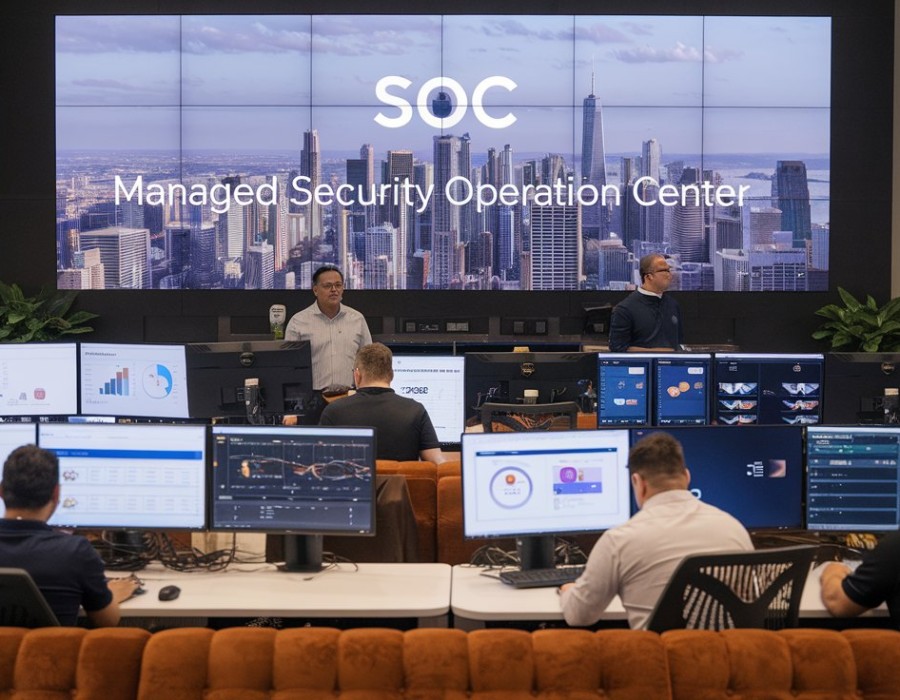In today’s digital era, businesses face a vast and constantly changing array of cyber threats. From ransomware attacks to phishing schemes, the scope and scale of these dangers can overwhelm even the most well-prepared companies. For organizations aiming to minimize their risk exposure, a Managed Security Operations Center (Managed SOC) offers a proactive and effective solution. By continuously monitoring and defending against emerging threats, a Managed SOC plays a vital role in reducing cyber risks and ensuring business continuity.
Understanding Cyber Risk Exposure
Cyber risk exposure refers to the potential vulnerabilities that hackers or other malicious actors can exploit. These vulnerabilities can exist in various forms, including weak passwords, outdated software, or unpatched security holes. Every business, regardless of size, faces some level of cyber risk exposure. However, the degree of exposure can vary depending on factors like industry, data sensitivity, and the complexity of a company's IT infrastructure.
The consequences of a cyberattack can be devastating. Financial losses, regulatory fines, loss of sensitive data, and reputational damage are just a few of the risks businesses face. This is why reducing cyber risk exposure is a top priority for any organization aiming to protect its assets and maintain customer trust.
How a Managed SOC Reduces Risk Exposure
A Managed SOC is specifically designed to minimize a company’s cyber risk exposure by continuously monitoring for threats, detecting vulnerabilities, and providing immediate response to incidents. By outsourcing security operations to a team of cybersecurity experts, businesses gain access to advanced tools and strategies that can reduce the likelihood of a successful attack.
Managed Security Operations Centers work proactively by using advanced analytics and security tools to identify risks before they can be exploited. This real-time monitoring ensures that any unusual activity, such as unauthorized access attempts or network anomalies, is flagged and addressed before it turns into a major security incident.
24/7 Threat Monitoring for Constant Protection
A significant advantage of a Managed SOC is its ability to provide 24/7 threat monitoring, which ensures that a company is protected around the clock. Many businesses struggle to maintain constant vigilance due to limited resources or internal IT team constraints. However, cyberattacks can occur at any time, often when companies least expect it. A Managed Security Operations Center eliminates this vulnerability by providing continuous oversight.
With Managed SOCs, businesses are not just reacting to threats after they happen but are actively preventing them. This approach significantly reduces the window of opportunity for attackers, limiting the chance of a successful breach and the resulting damage.
Advanced Tools and Technologies to Minimize Risk
One of the key ways a Managed SOC reduces cyber risk exposure is through its use of cutting-edge technologies such as Security Information and Event Management (SIEM), threat intelligence platforms, and artificial intelligence (AI). These technologies can quickly sift through vast amounts of data, identifying potential risks or unusual behavior in real-time.
For instance, a Managed Security Operations Center uses SIEM to collect and analyze security data from various sources across the network. By correlating this information, the SOC can detect patterns that indicate an imminent threat or vulnerability. In addition, AI and machine learning algorithms help identify new or previously unknown threats, further enhancing the SOC’s ability to mitigate risks.
Vulnerability Management and Patch Implementation
One critical element of cyber risk reduction is addressing system vulnerabilities. Many successful cyberattacks exploit known weaknesses in software or hardware. Unfortunately, many businesses fail to keep up with patching and updating their systems, leaving them open to attacks.
A Managed SOC offers vulnerability management services that continuously scan for weaknesses in an organization's infrastructure. Once a vulnerability is identified, the Managed Security Operations Center can assist with applying patches and updates, ensuring that known weaknesses are addressed before they can be exploited by malicious actors.
Expert Incident Response for Faster Recovery
The SOC team can quickly assess the severity of an attack, contain the threat, and implement recovery measures. This rapid response is crucial for minimizing the financial and reputational damage associated with a successful cyberattack. Furthermore, SNSKIES perform post-incident analyses to identify the root cause of the breach, which helps prevent similar incidents in the future.
Reduced Costs and Greater Efficiency
Managing cybersecurity internally can be expensive, requiring significant investments in technology and skilled personnel. For small and medium-sized businesses, maintaining an in-house Security Operations Center (SOC) can be cost-prohibitive. A Managed SOC offers a more cost-efficient solution by providing the same level of protection without the high overhead.
Outsourcing security operations to a Managed Security Operations Center also ensures that resources are used more efficiently. Internal teams can focus on core business activities, knowing that their cybersecurity is being managed by experts. This not only reduces the direct costs associated with managing security but also minimizes the potential financial fallout of a cyberattack.
Conclusion
In a world where cyber threats are constantly evolving, businesses must take proactive steps to reduce their risk exposure. A Managed Security Operations Center offers an invaluable service by providing continuous threat monitoring, advanced security technologies, and expert incident response. By leveraging the expertise and resources of a Managed SOC, businesses can significantly reduce their cyber risk exposure and ensure long-term security and resilience.
With the rise of sophisticated cyberattacks, a Managed SOC is no longer just an option but a necessity for organizations looking to protect their digital assets, maintain customer trust, and ensure the continuity of their operations.





Comments